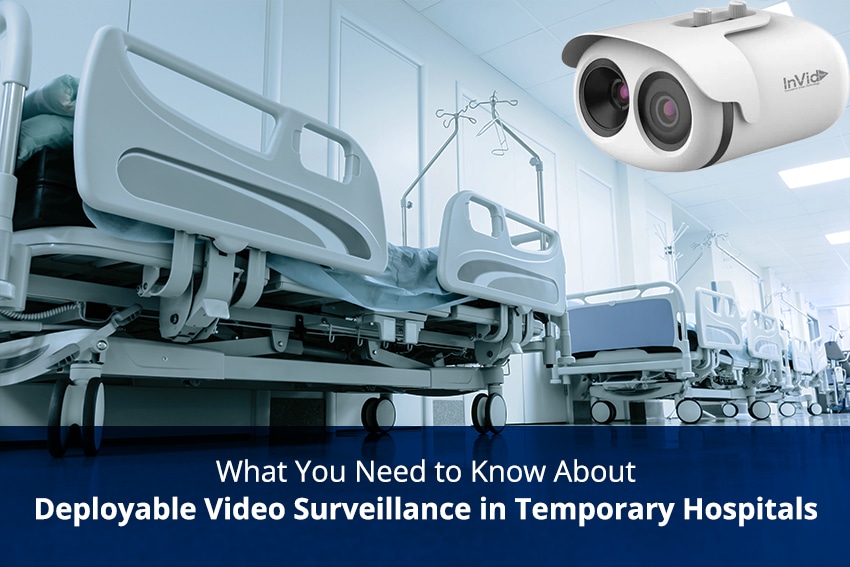

What You Need to Know About Deployable Video Surveillance in Temporary Hospitals
As we’ve entered the second wave of COVID-19, patients are now filling up hospital beds at record rates. After just the first week of December, the nation saw over 100,000 patients hospitalized with COVID-19, surpassing the number of hospitalizations during the first wave of cases.
With many hospitals running the risk of maxing out their capacities, pop-up hospitals are likely to re-emerge in COVID-hotspots.
Due to the high cost and complexity of traditional surveillance solutions, many of these pop-up structures could have critical shortfalls in security, potentially leading to theft, noncompliance, and unnecessary patient contact.
Deployable video surveillance in Temporary Hospitals and audio solutions can help to mitigate these security risks. They’re relatively simple to deploy, cost-effective, and a high-quality alternative to more costly and complicated solutions.
How Video Surveillance in Temporary Hospitals works
Deployable video surveillance solutions can provide the same high-quality surveillance as a more costly solution, but for a short period. In the case of a temporary healthcare structure, the system would consist of several high-performance IP cameras, a pre-configured cabinet with a built-in 4G/LTE router, and software for remote viewing and management.
Not only are these systems easy to install, but they also can provide comparable image quality to that of higher-end solutions. This allows for reliable detection, access management, and remote management.
For temporary medical setups that change location depending on the number of cases in certain regions, the same equipment can be easily transferred and deployed, again and again, making it convenient and even more cost-efficient, especially when faced with the reality that resources could become sparse as cases and capacities rise.
Deployable Video Surveillance in Temporary Hospitals
Temporary hospitals have unique security needs that call for flexible security solutions. Deployable surveillance in Temporary Hospitals solutions meet those needs by supplying an alternative surveillance framework for temporary units that requires less time and resource investment while meeting unique security demands.
For instance, medical asset security is a critical concern in healthcare. Deployable surveillance in Temporary Hospitals measures are critical in safeguarding equipment, personal protective equipment (PPE), drugs, and other medical supplies.
Deployable surveillance in Temporary Hospitals also serves as a form of access control in that it enables users to monitor and restrict who is allowed to enter medical facilities for security purposes and contagion mitigation.
Such Deployable surveillance in Temporary Hospitals can also ensure medical personnel is meeting COVID-19 safety standards while significantly reducing the risk of exposure, mitigating potential contamination, and ensuring overall safety.
Deployable surveillance in Temporary Hospitals can also support medical staff in treating and monitoring patients safely while working under high-stress circumstances.
The Deployable surveillance in Temporary Hospitals combined with audio surveillance can work to mitigate unnecessary patient contact and aid medical staff in prioritizing resources where they are needed most. The software typically accompanying these deployable systems can provide reliable and timely updates to remote decision-makers for informed decision-making in times of crisis.
Flexible solutions that meet your needs for Deployable surveillance in Temporary Hospitals
When it comes to temporary medical centers, a deployable surveillance solution is the most advantageous surveillance option because it’s adapted to provide flexible, scalable, and reliable surveillance during times of crisis.


